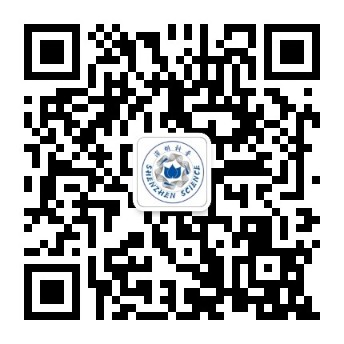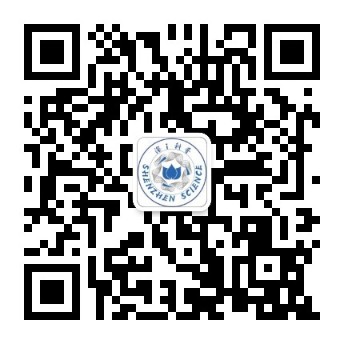音频科普:入侵蛙不会影响夏威夷的鸟类
音频科普:入侵蛙不会影响夏威夷的鸟类
Coquí frogs are invasive species in Hawaii. But they don’t seem to bug the islands’ native and nonnative birds. Jason G. Goldman reports.Coquí 蛙是夏威夷的入侵物种。但是它们似乎不会影响岛上的原生和外来鸟类。贾森·G·戈德曼(Jason G. Goldman)报道
撰文\播音:贾森·G·戈德曼(Jason G Goldman)
翻译:张艺箫
审校:郭晓
Coquí frogs. They’re named for the sound they make.And though just an inch long, a coqui can produce a 90-decibel call—about the volume of a motorcycle 25 feet away.
Coquí 蛙的名字由它们的叫声得来。<声音>尽管身长仅1英寸,coquí 蛙能发出90分贝的叫声——相当于一辆距离25英里的摩托车发出的音量。
The animals and their nocturnal chirps are beloved in their native Puerto Rico. But not in Hawaii, where they became invasive in the late 1980s.
这种动物和它们的“夜曲”在其原生的波多黎各很受欢迎。但在夏威夷却并不如此,它们于二十世纪80年代晚期成为了夏威夷的入侵物种。
The frogs have become a nuisance in part because they cause people to lose sleep, which has actually driven down property values. But some of Hawaii's endangered insect species could face extinction due to the hungry invaders. Biologists also feared that the frogs could impact Hawaii's insect population to such an extent that native birds that also eat insects could go hungry.
这种青蛙已经成为当地公害,部分原因是它们导致人们失眠,进而降低了当地的房价。但是这些饥饿的入侵者可能会导致夏威夷的一些濒危昆虫物种灭绝。生物学家还担心,这些青蛙可能会影响夏威夷的昆虫数量,使得本地吃昆虫的鸟类挨饿。
A group of researchers has now put that concern to the test by looking at thirty sites on the big island—half that were infested with coquís, and half that were still coquí-free.
一支研究团队现在正在验证这种担忧,他们观察了大岛上的30个测试点,其中一半测试点有coquí 蛙入侵而另一半没有。
"And we didn't see any response in the native birds. They seem to be doing fine with the coquís. At least their abundances were similar in places where there were coquís, and not coquís."
“我们并没有观察到原生的鸟类有任何反应。它们似乎和Coquí 蛙相处融洽。至少在有coquí 蛙和没有coquí 蛙的地区,它们的数量没有什么区别。”
University of Utah ecologist Karen Beard.
犹他大学的生态学者Karen Beard 说
"But it was the nonnative birds where we really saw the response. And we didn't see it in a negative way."
“但是我们却观察到了非本地鸟类的反应。并不是负面反应。”
Three types of nonnative birds were actually more abundant in areas with more frogs.
在coquí蛙更多的地方,三种非本地鸟的数量也更多。
"And we were like, huh. That's kind of interesting."
“我们看到这个结果的反应就是:嗯,有点意思。”
The researchers think they can explain this in two parts: coquís forage in leaf litter while Hawaii's native insect-eating birds forage in the canopy and understory, so they may be going after different types of prey. Meanwhile, the nonnative birds may be getting a boost by eating the frogs themselves. After all, a fingernail sized baby coquí frog is about the same size as a typical rainforest insect. The study is in the journal The Condor. [Robyn L. Smith, Karen H. Beard, & David N. Koons.Invasive coquí frogs are associated with greater abundances of nonnative birds in Hawaii, U.S.A.]
研究人员认为它们可以从两个方面解释这种现象:coquí 蛙在落叶中觅食而夏威夷以昆虫为食的原生鸟类则在树冠层和下层植被中觅食,所以它们可能要找的猎物不一样。与此同时,非本地鸟类可能通过吃掉青蛙,数量得以增长。毕竟,一个指甲大小的婴儿coquí 蛙和一个典型的雨林昆虫大小差不多。这项研究结果发表在《神鹰》(The Condor)杂志上 [Robyn L. Smith, Karen H. Beard, & David N. Koons.Invasive coquí frogs are associated with greater abundances of nonnative birds in Hawaii, U.S.A.]
Despite these findings, coquí frogs could still harm Hawaii's native birds—indirectly.
除了这些研究结果之外,coquí 蛙还是会间接地伤害夏威夷的本地鸟类。
"If there's a lot more nonnative birds, there's a lot more nonnative bird nests. That could do something like increase rat and mongoose populations, which are known to be nest predators of native birds."
“如果非本地鸟类大量增加,非本地鸟类的鸟巢也会大量增加。那可能会增加老鼠和猫鼬的数量,而老鼠和猫鼬是出了名的本地鸟类巢穴的捕食者。”
Hawaii has stopped attempting to eradicate the big island of the invasive hoppers, where some spots may have 10 million coquis per square kilometer. Instead, the focus is on keeping them from expanding even further into the rainforest. To protect local species—and allow them to get some sleep.
夏威夷州已经停止试图根除大岛上的入侵跳跃者,然而岛上的有些地方可能每平方千米有一千万只coquí 蛙。取而代之,夏威夷着重防止coquí 蛙进一步入侵至雨林。这样做是为了保护当地物种,也是为了让当地人睡个好觉。
关注【深圳科普】微信公众号,在对话框:
回复【最新活动】,了解近期科普活动
回复【科普行】,了解最新深圳科普行活动
回复【研学营】,了解最新科普研学营
回复【科普课堂】,了解最新科普课堂
回复【科普书籍】,了解最新科普书籍
回复【团体定制】,了解最新团体定制活动
回复【科普基地】,了解深圳科普基地详情
回复【观鸟知识】,学习观鸟相关科普知识
回复【博物学院】,了解更多博物学院活动详情
Coquí frogs are invasive species in Hawaii. But they don’t seem to bug the islands’ native and nonnative birds. Jason G. Goldman reports.Coquí 蛙是夏威夷的入侵物种。但是它们似乎不会影响岛上的原生和外来鸟类。贾森·G·戈德曼(Jason G. Goldman)报道
撰文\播音:贾森·G·戈德曼(Jason G Goldman)
翻译:张艺箫
审校:郭晓
Coquí frogs. They’re named for the sound they make.
Coquí 蛙的名字由它们的叫声得来。<声音>尽管身长仅1英寸,coquí 蛙能发出90分贝的叫声——相当于一辆距离25英里的摩托车发出的音量。
The animals and their nocturnal chirps are beloved in their native Puerto Rico. But not in Hawaii, where they became invasive in the late 1980s.
这种动物和它们的“夜曲”在其原生的波多黎各很受欢迎。但在夏威夷却并不如此,它们于二十世纪80年代晚期成为了夏威夷的入侵物种。
The frogs have become a nuisance in part because they cause people to lose sleep, which has actually driven down property values. But some of Hawaii's endangered insect species could face extinction due to the hungry invaders. Biologists also feared that the frogs could impact Hawaii's insect population to such an extent that native birds that also eat insects could go hungry.
这种青蛙已经成为当地公害,部分原因是它们导致人们失眠,进而降低了当地的房价。但是这些饥饿的入侵者可能会导致夏威夷的一些濒危昆虫物种灭绝。生物学家还担心,这些青蛙可能会影响夏威夷的昆虫数量,使得本地吃昆虫的鸟类挨饿。
A group of researchers has now put that concern to the test by looking at thirty sites on the big island—half that were infested with coquís, and half that were still coquí-free.
一支研究团队现在正在验证这种担忧,他们观察了大岛上的30个测试点,其中一半测试点有coquí 蛙入侵而另一半没有。
"And we didn't see any response in the native birds. They seem to be doing fine with the coquís. At least their abundances were similar in places where there were coquís, and not coquís."
“我们并没有观察到原生的鸟类有任何反应。它们似乎和Coquí 蛙相处融洽。至少在有coquí 蛙和没有coquí 蛙的地区,它们的数量没有什么区别。”
University of Utah ecologist Karen Beard.
犹他大学的生态学者Karen Beard 说
"But it was the nonnative birds where we really saw the response. And we didn't see it in a negative way."
“但是我们却观察到了非本地鸟类的反应。并不是负面反应。”
Three types of nonnative birds were actually more abundant in areas with more frogs.
在coquí蛙更多的地方,三种非本地鸟的数量也更多。
"And we were like, huh. That's kind of interesting."
“我们看到这个结果的反应就是:嗯,有点意思。”
The researchers think they can explain this in two parts: coquís forage in leaf litter while Hawaii's native insect-eating birds forage in the canopy and understory, so they may be going after different types of prey. Meanwhile, the nonnative birds may be getting a boost by eating the frogs themselves. After all, a fingernail sized baby coquí frog is about the same size as a typical rainforest insect. The study is in the journal The Condor. [Robyn L. Smith, Karen H. Beard, & David N. Koons.Invasive coquí frogs are associated with greater abundances of nonnative birds in Hawaii, U.S.A.]
研究人员认为它们可以从两个方面解释这种现象:coquí 蛙在落叶中觅食而夏威夷以昆虫为食的原生鸟类则在树冠层和下层植被中觅食,所以它们可能要找的猎物不一样。与此同时,非本地鸟类可能通过吃掉青蛙,数量得以增长。毕竟,一个指甲大小的婴儿coquí 蛙和一个典型的雨林昆虫大小差不多。这项研究结果发表在《神鹰》(The Condor)杂志上 [Robyn L. Smith, Karen H. Beard, & David N. Koons.Invasive coquí frogs are associated with greater abundances of nonnative birds in Hawaii, U.S.A.]
Despite these findings, coquí frogs could still harm Hawaii's native birds—indirectly.
除了这些研究结果之外,coquí 蛙还是会间接地伤害夏威夷的本地鸟类。
"If there's a lot more nonnative birds, there's a lot more nonnative bird nests. That could do something like increase rat and mongoose populations, which are known to be nest predators of native birds."
“如果非本地鸟类大量增加,非本地鸟类的鸟巢也会大量增加。那可能会增加老鼠和猫鼬的数量,而老鼠和猫鼬是出了名的本地鸟类巢穴的捕食者。”
Hawaii has stopped attempting to eradicate the big island of the invasive hoppers, where some spots may have 10 million coquis per square kilometer. Instead, the focus is on keeping them from expanding even further into the rainforest. To protect local species—and allow them to get some sleep.
夏威夷州已经停止试图根除大岛上的入侵跳跃者,然而岛上的有些地方可能每平方千米有一千万只coquí 蛙。取而代之,夏威夷着重防止coquí 蛙进一步入侵至雨林。这样做是为了保护当地物种,也是为了让当地人睡个好觉。
关注【深圳科普】微信公众号,在对话框:
回复【最新活动】,了解近期科普活动
回复【科普行】,了解最新深圳科普行活动
回复【研学营】,了解最新科普研学营
回复【科普课堂】,了解最新科普课堂
回复【科普书籍】,了解最新科普书籍
回复【团体定制】,了解最新团体定制活动
回复【科普基地】,了解深圳科普基地详情
回复【观鸟知识】,学习观鸟相关科普知识
回复【博物学院】,了解更多博物学院活动详情

做科普,我们是认真的!
扫描关注深i科普公众号
加入科普活动群

- 参加最新科普活动
- 认识科普小朋友
- 成为科学小记者
上一篇:音频科普:营养指南对地球也有利
下一篇:音频科普:发出破坏性声音的鱼
 会员登录
会员登录
















 深圳市宝安区国际会展中心20号馆
深圳市宝安区国际会展中心20号馆







